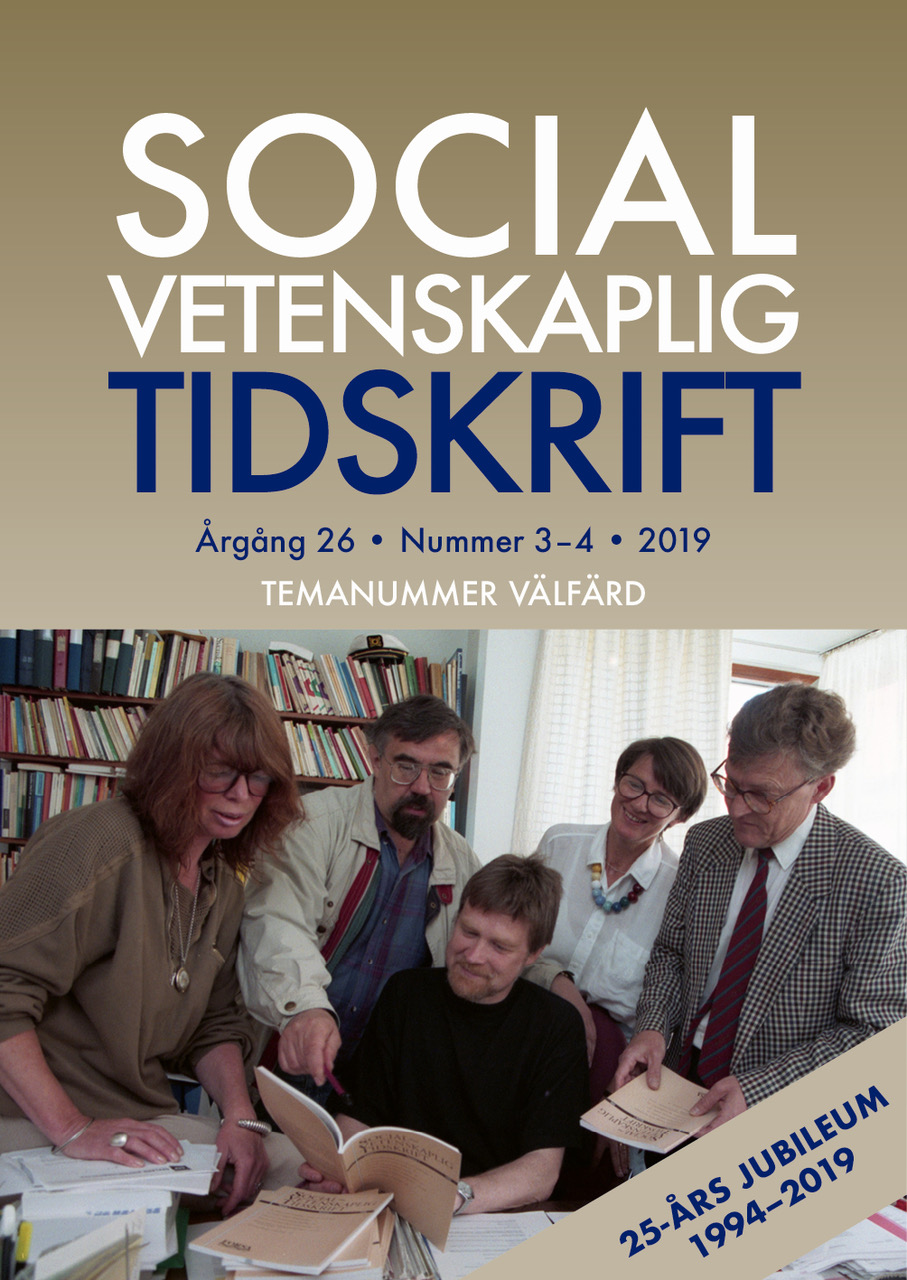Familjen i välfärdspolitiken
DOI:
https://doi.org/10.3384/SVT.2019.26.3-4.3090Abstract
The role of the family in Swedish welfare policy
In the present article, I discuss the role of the family in Swedish welfare policy, from both theoretical and empirical perspectives. I analyse men’s and women’s time use and focus on the organization of paid and unpaid work. I describe how time allocation varies with gender, family status, and life cycle. The analysis shows that the family plays a more important role in practice than in theory, mainly through the fact that women perform more unpaid work (housework and caregiving) than men, which affects both their income and their well-being negatively. I argue that gender equality must be given a more prominent position in Swedish welfare policy. For example, family policy must be reformed, with gender equality on the labour market and in the home as an explicit goal. The present situation for working parents is different from that of previous decades when Swedish family policy was formulated. Reforms are thus necessary for safeguarding welfare and population well-being in the short and long run.
Downloads
Publicerad
Referera så här
Nummer
Sektion
Licens
Allt material i Socialvetenskaplig tidskrift publiceras sedan 2022 (Vol 28 Nr 2) med omedelbar öppen tillgång (open access), under Creative Commons-licensen CC BY 4.0. Upphovsrätten till innehållet tillhör respektive författare.
Allt innehåll i tidskriften är fritt tillgängligt utan kostnad och får fritt läsas, laddas ned, kopieras, delas, skrivas ut och länkas. När innehållet används måste författare, källa och licens anges. Författaren kan fritt göra sin publicerade text tillgänglig på institutionella och internetbaserade arkiv, exempelvis sitt lärosätes digitala arkiv eller andra tjänster för detta.
Inga publiceringsavgifter tas ut vid publicering i Socialvetenskaplig tidskrift.


